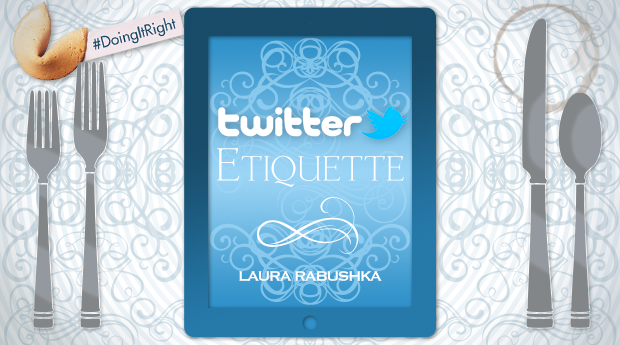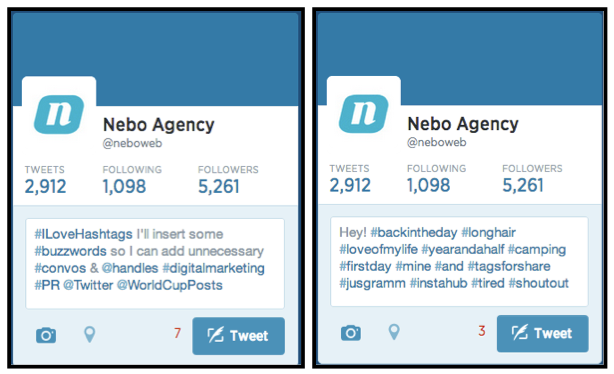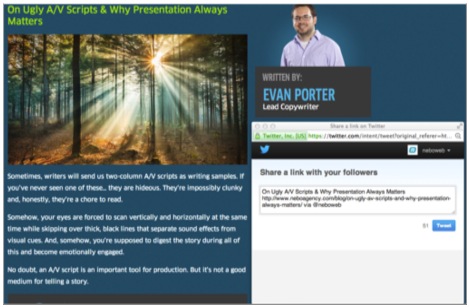Rabushka's Rules: Twitter Etiquette

I was recently on Ragan’s PR Daily reading an article about disruption in PR. I agreed with a lot of what the author had to say, a CEO of a start-up PR firm in Atlanta, and I felt compelled to tell somebody about it. So, where was the first place I went? Twitter, of course. Not only did I think the piece represented my beliefs about the industry, but I also wanted to put it out there for others to read in the hopes it might inspire them, too.
The CEO of the company saw my tweet, and replied with a thank you, noting she was a fellow UA PR grad and that she would love to connect sometime. If you know me, you know a Bama shoutout makes you immediately my best friend. So we exchanged emails offline and planned a time to meet over the next few weeks to connect in person and exchange thoughts related to the article.
This is a fantastic example of a brand doing it right.
It’s an example of someone who knows how to use Twitter to reach her audience, how to inspire and how to build relationships to maintain loyal fans. It demonstrates the best of brand reputation management. And it shows someone who understands their status as an extension of their brand and knows the value in forming real connections.
Teach Me or Make Me Laugh
The bottom line is Twitter users visit the site for information. A recent study by InkHouse and GMI polled 1,000 Americans ages 18+ and asked them how they read and shared news.
When asked the types of news they shared most, they responded:
-
- Breaking News
- Humorous Events
- Informational Pieces (How-Tos)
- Thoughtful Articles with Tips from Experts
This shouldn’t be of surprise to anyone. It totally makes sense that “Breaking News” is first given the rise of real time feeds and constant sharing among users.
People want to either laugh or learn. And they want to share their experience with others. It is up to us as PR professionals to understand their wants and appeal to them, while maintaining our purpose as a brand.
When asked the top reasons Americans shared news, pollers said:
- To Inform
- To Entertain
- To Rally Support for Issues
Hmm, sounds eerily familiar to my statement above.
Poor Form
So, how do you know if you’re using the platform in poor taste?
Personally, I can’t stand the complainers and the show offs. Please don’t show me another weird selfie or pic of your 5-yr-old. This goes for brands (I really hope you aren’t sharing pics of your children on your brand page) and executive/management profiles. Remember you’re an extension of your brand and users look to you for insight into a company beyond the “About Me” section on your website.
Make sure you remain a real person, showcase your likes, dislikes, interests and passions, but don’t tell me (or show me) too much about yourself. I don’t want to know everything. Plus, there is no reason, ever, I would need a close-up of your face. Just stop.
#DoingItRight
So, how should you present yourself? Well, I may not be able to provide you with a formula for success on Twitter, but I can shed some light on what’s rude and what’s polite and provide an idea of what really reaches users so you can build mutual respect and positive brand associations:
1. Participate & bond with your audience
Try to respond to all of your followers if they talk to you. If you’re tagged in a message, reply to them. Whether they’re asking a question, retweeting a blog post, sharing your press release or congratulating your recent achievement, personally thank and address your interactions. Build mutual respect through listening and proving you are listening with personalized messages or replies. Dig deeper into your audience and study what they’re tweeting about, who they’re following and what their professional background is. You can even participate from a distance. If you can’t go to a popular industry conference, follow the conversations from home. Prove you’re engaged and involved in the industry. Be a trustworthy, legitimate source of information on Twitter by being resourceful and involved.
For example, SMX Advanced is occurring as we speak. Maybe we should participate in the discussion even though we were unable to attend?
2. Know how to communicate
If you’re one of those brands who tries to insert every relevant hashtag known to man in tweets, please stop. It makes it difficult to read, and I’m never going to click on them. Be selective and as simple as possible, and select the right hashtags and words that relate most to your tweet’s topic. If you have 30 extra characters left over, great. Just because you have space, doesn’t mean you should fill it. Be simple and remember your audience checks Twitter in brief spurts of free time, i.e. during lunch breaks, while they’re waiting in line at the bank, when they have a moment in between Sunday errands, etc. They only want to check on the world momentarily until they have to get back to the real thing they were focused on. Make sure your tweets are considerate and simple enough to absorb during these spurts. #DoingItWrong
We’d never pull this, mainly because it’s weird looking, but also because it disrespects user experience and simply promotes our own agenda (to force our way into conversations just to build visibility). How does that benefit our followers? It doesn’t.

3. Coach and rally
Twitter users want industry experts. Make sure your brand shares its thought leadership and your executives share original content on their Twitter feeds, as well. Ensure your team is creating valuable content that will truly help the user. Get people pumped about an idea. Twitter is the biggest popularity contest there is. And if a topic or post gets picked up by the right people, that idea can be trending within hours. Twitter has the potential to spread your message far and wide, and fast. Use it to build awareness of a cause you’re supporting. Your brand should use that to reach its audience and grow knowledge on a deeper level.
We see it as a huge opportunity to share our thought leadership on our Twitter account, mainly because we think it’s valuable to our audience there. But also because it helps promote the great ideas our employees have and position them publicly as the experts they really are.

4. Acknowledge your people
Gratitude never goes unforgotten. Showing your appreciation for your followers and those who engage with you and your content will make their hearts happy and yours. You not only reveal integrity when you give thanks, but you demonstrate respect and modesty. All admirable qualities, and believe it or not, all very rare to consistently demonstrate.
Nebo’s @KimmLincoln does a good job at this, and here’s a great example of acknowledgement after a presentation she gave at 2014’s PPC Hero Conference.
@kimmlincoln Great presentation! Too bad I'm allergic to cats! ???? #heroconf
— Antique Nguyen (@antiquenguyen) April 29, 2014
So is @WholeFoods, apparently, as we noticed after they responded to our CEO, Brian. They did a great job at personifying their brand and being human, while acknowledging a consumer when he tagged them in a tweet.
@WBEaster I can tell you're in Austin, enjoy the rest of your lunch!
— Whole Foods Market (@WholeFoods) April 29, 2014
Moving Forward
Although forming personal relationships, keeping it simple and coaching are all great, what really seals your reputation is acknowledgement. The foundational pieces to having an account worth following can be simple to adopt. But the listening and thanking part is usually the hardest, and most forgotten tactic to building a respectable brand presence on social. Remember at the end of the day, we’re all people. And caring about others, what they want to read and what they are going to share is irreplaceable when it comes to building relationships and mastering Twitter for your brand.
Comments
Add A CommentThis is a great article, and I wish I could force SO MANY people to read it! They need it. Well done Laura!